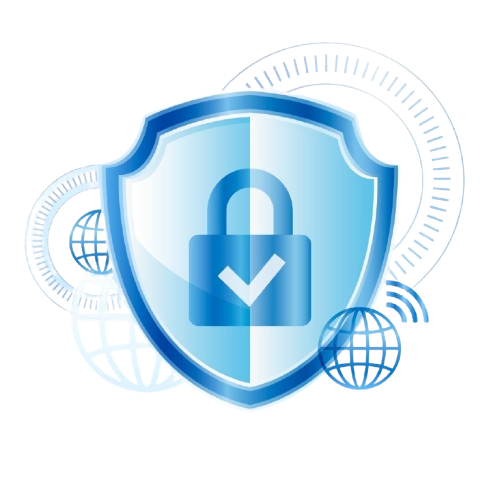In the world of modern medicine, accessibility and mobility are becoming increasingly important. Whether you’re a paramedic attending to an emergency, a rural healthcare provider, a disaster response team member, or a traveling doctor, portable medical devices have become essential tools in field settings.
These compact and efficient tools not only make medical diagnostics and treatment possible in remote areas but also help save lives when seconds matter. In this blog, we’ll explore the best portable medical devices used for field applications and why they are must-haves for healthcare professionals on the move.
Why Portable Medical Devices Matter
Field environments present unique challenges that traditional hospital settings don’t: lack of infrastructure, limited power supply, extreme weather, and time-sensitive emergencies. In such scenarios, portable medical equipment:
-
Allows on-the-spot diagnosis and monitoring
-
Supports critical care in remote or disaster-hit areas
-
Enables fast and efficient triage in emergency zones
-
Promotes continuity of care during patient transport
With the right tools, healthcare professionals can offer high-quality care even outside the clinic walls.
Top 10 Portable Medical Devices for Field Use
Here’s a curated list of the most reliable and widely used portable medical devices suited for various field scenarios.
1. Portable Ultrasound Machines
Use: Diagnostics, pregnancy monitoring, trauma assessment
Modern portable ultrasound machines are compact, often tablet-sized, and offer high-resolution imaging. They are invaluable in field diagnostics, especially in obstetric care, trauma, and internal medicine.
Popular models: GE Vscan Air, Philips Lumify
Advantages:
-
Lightweight and wireless options available
-
Real-time imaging
-
Works via smartphone or tablet apps
2. Handheld ECG Monitors
Use: Cardiac health monitoring
These pocket-sized devices allow healthcare providers to record heart rhythms and detect arrhythmias within seconds. Some models are Bluetooth-enabled and sync with mobile devices.
Popular models: KardiaMobile, AliveCor
Advantages:
-
Instant ECG reports
-
Easy to use without gel or electrodes
-
Shareable results via apps
3. Portable Oxygen Concentrators
Use: Respiratory support
Especially critical during respiratory distress or in high-altitude areas, portable oxygen concentrators supply medical-grade oxygen without needing bulky cylinders.
Popular models: Inogen One G5, Philips SimplyGo Mini
Advantages:
-
Lightweight and battery-operated
-
FAA-approved for air travel
-
Pulse-dose and continuous flow modes
4. Digital Thermometers & Infrared Scanners
Use: Temperature checks, fever screening
A must-have in any first aid or field medical kit. Non-contact infrared thermometers gained popularity during the COVID-19 pandemic and remain essential for rapid screening.
Advantages:
-
Quick readings (in 1-2 seconds)
-
Hygienic and touch-free
-
Suitable for adults, kids, and infants
5. Portable Blood Pressure Monitors
Use: Blood pressure tracking and cardiac assessment
Compact BP monitors with digital displays make it easy to track a patient’s vitals in the field, especially for elderly care or patients with hypertension.
Popular models: Omron Portable Series, Withings BPM
Advantages:
-
Battery-powered and lightweight
-
One-button operation
-
Bluetooth-enabled options
6. Pulse Oximeters
Use: Monitoring oxygen saturation and pulse rate
Finger pulse oximeters are compact, accurate, and vital for respiratory and cardiovascular monitoring. They are commonly used in EMS, mountain rescues, and post-operative care.
Advantages:
-
Instant readings
-
Fits easily in a pocket
-
Low power consumption
7. Portable Glucometers
Use: Blood sugar monitoring for diabetic patients
In emergencies or rural settings, managing blood sugar levels is critical for diabetic patients. Portable glucometers offer quick and accurate readings with just a drop of blood.
Popular models: Accu-Chek Guide, OneTouch Verio
Advantages:
-
Small and battery-powered
-
Fast results (within 5 seconds)
-
Memory storage for past readings
8. Defibrillators (AEDs)
Use: Cardiac arrest emergencies
Automated External Defibrillators (AEDs) are life-saving devices that deliver electric shocks to restore normal heart rhythm. They’re designed for both professional and layperson use.
Popular models: Zoll AED Plus, Philips HeartStart
Advantages:
-
Voice-guided instructions
-
Rugged and waterproof designs
-
Self-checking battery systems
9. Portable Nebulizers
Use: Asthma, COPD, and respiratory therapy
These small, battery-powered devices turn liquid medicine into mist, making it easy for patients with breathing disorders to receive quick treatment.
Advantages:
-
Quiet and travel-friendly
-
USB-rechargeable options
-
Effective drug delivery in emergencies
10. Mobile Health Apps & Diagnostic Kits
Use: Remote consultations, data collection, self-assessment
Smartphone-compatible kits and apps now offer features like vision tests, hearing tests, skin analysis, and even AI-powered diagnostics. While not standalone medical devices, they are powerful companions for field doctors.
Examples:
-
Smart stethoscopes with app integration
-
Digital otoscopes
-
Comprehensive telemedicine kits
Key Features to Look For in Portable Medical Devices
When selecting medical devices for field use, prioritize the following features:
-
Portability: Lightweight and easy to transport
-
Battery Life: Long-lasting power for field operations
-
Durability: Shock-resistant and weather-proof designs
-
Ease of Use: Minimal training required for operation
-
Connectivity: Bluetooth or Wi-Fi for syncing with devices
-
Regulatory Compliance: Certified by FDA, CE, or relevant bodies
Use Cases: Who Needs Portable Medical Devices?
-
Emergency Responders (EMS/Paramedics)
For quick triage, life support, and stabilizing patients. -
Military and Combat Medics
For battlefield injuries and trauma care in remote locations. -
Rural and Remote Health Clinics
Where traditional infrastructure is unavailable. -
Disaster Relief and Humanitarian Missions
For rapid deployment during floods, earthquakes, or epidemics. -
Home Healthcare Providers
For elderly or chronically ill patients requiring regular monitoring. -
Telemedicine Practitioners
Supporting remote diagnosis with connected diagnostic tools.
Conclusion
Portable medical devices have revolutionized how and where healthcare can be delivered. With their compact size, reliability, and advanced technology, they empower medical professionals to bring care closer to those who need it — anytime, anywhere.
Whether you’re operating in a rural village, on a mountaintop, or in an emergency vehicle, having the right field medical equipment can mean the difference between life and death.
Invest wisely in these portable tools — because mobility is the future of medicine.



Leave A Comment